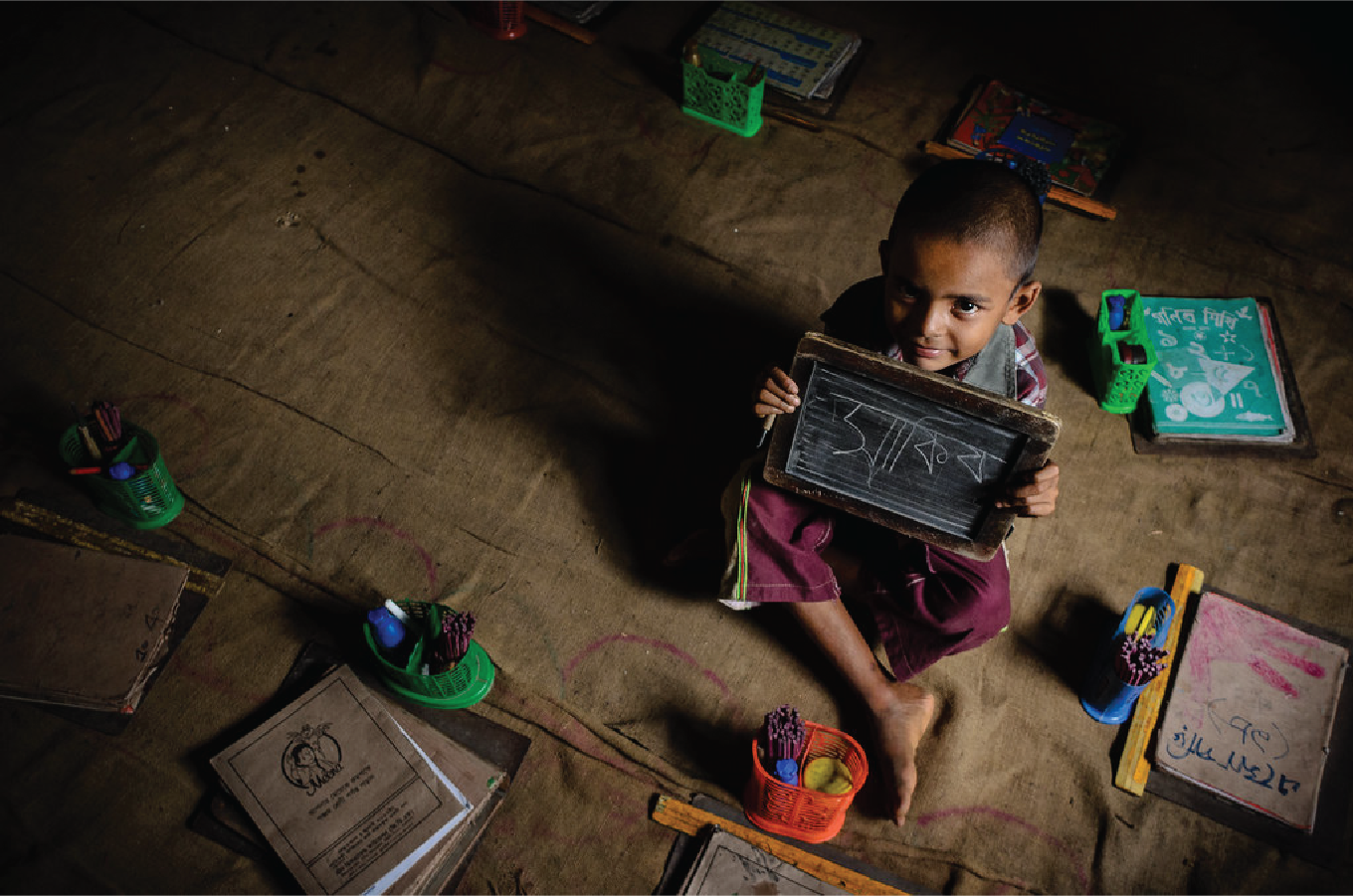60 Lac primary and secondary school-going children are at risk of learning loss due to Covid-19
Covid 19 has created the concept of ,’new poor’ and ‘reversed migration’ means migration from urban areas to villages. The impact of Covid 19 on education is also frareaching reveals a joint survey of PPRC and BIGD writes Asad zaman.

Since the closure of schools in March 2020, more than a year ago, there have been severe disruptions in the education life of children, especially those from poorer groups. The extended closure has led to far-reaching consequences resulting in an increased risk of learning losses, dropouts, and psychological and economic costs says a joint study by the Power and Participation Research Center (PPRC) and BRAC Institute of Governance and Development (BIGD). It is worth mentioning here that BRAC University conducted a national three-phase rapid telephonic survey between April 2020 and March 2021 to assess the poverty impact of the COVID-19 crisis.
The findings from Part II of the third phase survey titled “COVID Impact on Education Life of Children” jointly presented by Dr. Hossain Zillur Rahman, Executive Chairman, PPRC, and Dr Imran Matin, Executive Director, BIGD, shows 19% of primary and 25% of secondary school-going children are at risk of learning loss. Part II of the survey focused on a subset of the larger third phase sample of 6,099 households with around 4,940 households, consisting of school-going aged children.
The report says even in pre-pandemic times, a greater proportion of secondary school-going aged children were out of school (21%) than primary (14%). More children were out of school in urban slums than rural at both primary and secondary levels. For those enrolled in schools, closures during the pandemic threw all that was routine into chaos. While some children ceased to study entirely, others resorted to six key ways of keeping up with their education. These included unsupervised self-study, studying with the support of family members, distance learning through online or television classes, private coaching, and shifting to Madrasahs. Even then, in many cases, irregularity in current studies persisted.
The study creates an important framework to capture Covid-19 induced learning loss risk amongst school children, a form of long term vulnerability. This risk is the combination of not studying and more unreliable modes of studying – self-studying without supervision, and irregular studying. At a minimum, 19% of primary & 25% of secondary students face learning loss risk. This risk of learning loss is more pronounced for urban secondary school-going children – 26% for females and 30% for males – and poorer groups, with secondary school-going males from extremely poor families being at the highest risk of 33% – possibly as a result of the COVID-19 induced economic shock. Without targeted remedial measures, this will lead to reduced learning capacity or risk of dropouts in future.
The survey reveals very low access to distance learning through both public and private channels with only around 10% of students who had access to or used distance learning opportunities to compensate for school closure. Government TV channel classes were viewed by only around 2%. 51% in primary and 61% in secondary went to coaching or private tuitions which has been the dominant coping mechanism. However, it was lower in urban compared to rural primarily due to higher costs. Studying with parents or siblings, especially for primary school, was also a crucial coping mechanism. Mothers, in particular, played an important support role for primary students (28%). The shift to Madrasah was four times higher and Madrasah enrollment was double for primary school-going children than secondary.
The survey further reveals the psychological costs of the pandemic – children aged between 10 and 20 in urban slums are twice as stressed (15.7%) as those in rural areas (8.4%). The survey also examined parental attitudes and concerns. More guardians displayed concerns about the learning (48%) and motivation loss (59%) and the expense burden education entails (46%), and less worry about contracting the coronavirus (14%).
“A significant portion of school-going children are at risk of learning loss. Thus, school reopening must be coupled with a set of remedial measures to cover the learning loss and help children to cope up.” shares Dr Imran Matin
In his final remarks, Dr Hossain Zillur Rahman stresses the need for discussion on the three main consequences of school closures – learning loss, education cost burdens, and multidimensional social alienation. “Amidst the uncertainty, we are facing, taking into consideration the second wave of COVID, PPRC-BIGD is recommending an early reopening to prevent learning and motivation loss and allay parental fears around education,” says Dr Rahman.
“A big policy message is to ensure that outside class hours, additional programs are required as a learning loss recovery strategy to mitigate the loss as part of a post-COVID human capital agenda. Otherwise, a large part of our population will not only be far removed from education but also become deskilled,” suggests Dr Zillur.
As a final policy message, Dr Hossain Zillur Rahman recommends that existing primary and secondary stipend programs be used to redress the out-of-pocket education cost burdens. Using the established database, the government can quickly provide a cash boost by allocating BDT 2960 crore in the 2021-22 budget. Prominent researchers, academicians, and journalists also attended the event and shared their comments.




